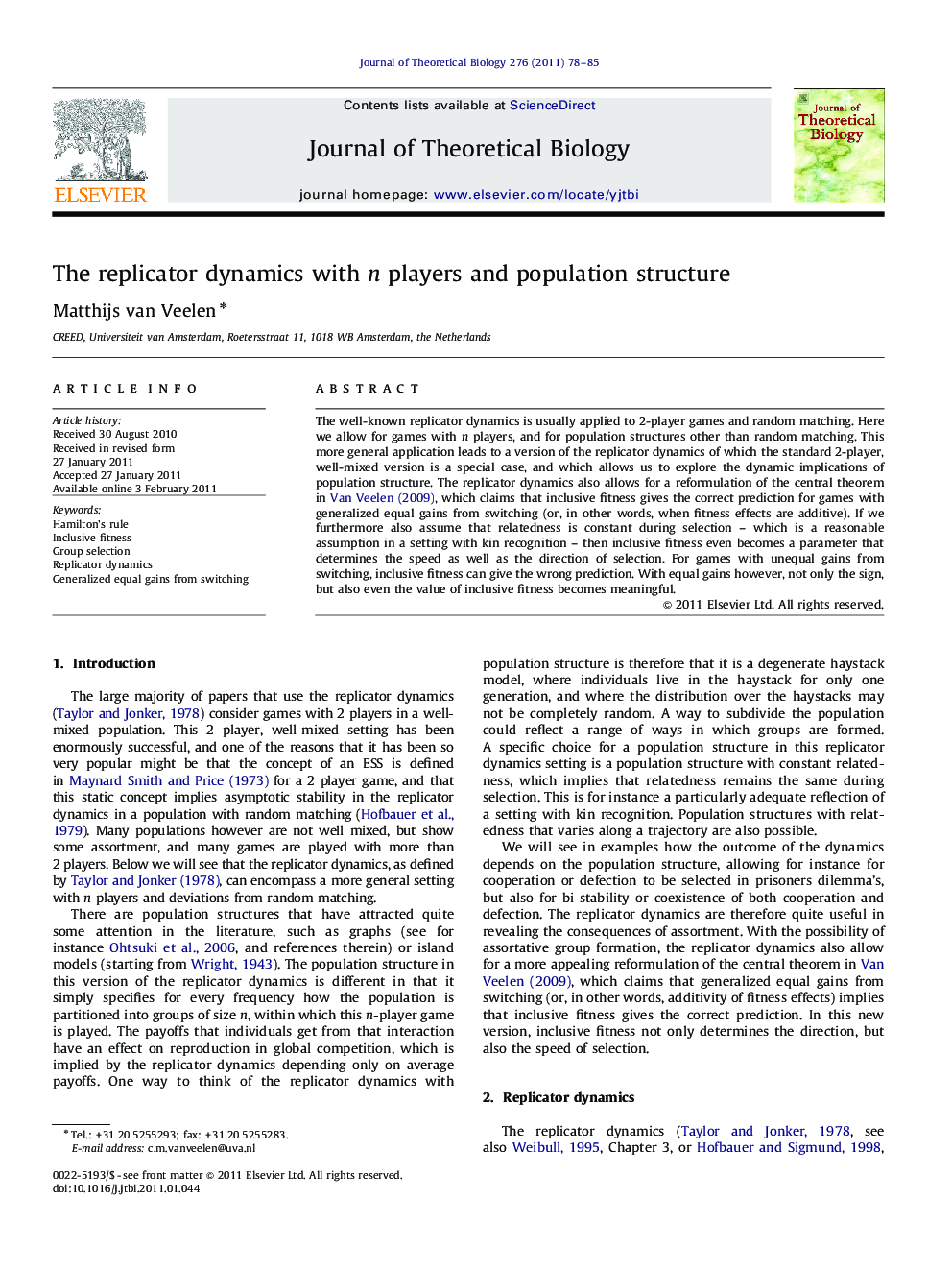| Article ID | Journal | Published Year | Pages | File Type |
|---|---|---|---|---|
| 4497178 | Journal of Theoretical Biology | 2011 | 8 Pages |
The well-known replicator dynamics is usually applied to 2-player games and random matching. Here we allow for games with n players, and for population structures other than random matching. This more general application leads to a version of the replicator dynamics of which the standard 2-player, well-mixed version is a special case, and which allows us to explore the dynamic implications of population structure. The replicator dynamics also allows for a reformulation of the central theorem in Van Veelen (2009), which claims that inclusive fitness gives the correct prediction for games with generalized equal gains from switching (or, in other words, when fitness effects are additive). If we furthermore also assume that relatedness is constant during selection – which is a reasonable assumption in a setting with kin recognition – then inclusive fitness even becomes a parameter that determines the speed as well as the direction of selection. For games with unequal gains from switching, inclusive fitness can give the wrong prediction. With equal gains however, not only the sign, but also even the value of inclusive fitness becomes meaningful.
